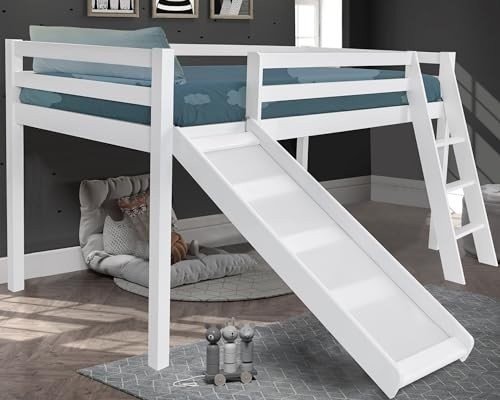Title: The Ultimate Guide to Kids Bunk Beds
Intro
As children grow, so does their need for area and storage solutions. Bunk beds are an outstanding way to take full advantage of area while supplying a fun and functional sleeping arrangement for your kids. This comprehensive guide will check out the numerous types, advantages, safety considerations, and FAQs connected to kids bunk beds.
I. Types of Kids Bunk Beds
- Standard Bunk Beds: These are the most common type, including two twin-sized beds stacked on top of each other.
- Futon Bunk Beds: The bottom bunk is replaced with a futon, offering a couch and a bed in one piece of furniture.
- Twin-Over-Full Bunk Beds: The bottom bunk is bigger, accommodating a full-sized mattress, while the top bunk is a twin.
- L-Shaped Bunk Beds: These consist of two beds put perpendicularly, providing more flooring space below.
- Loft Bunk Beds: A single bed is put on a raised platform, leaving room for a desk, play location, or storage below.
II. Advantages of Kids Bunk Beds
- Space-Saving: Bunk beds are perfect for smaller bedrooms, maximizing flooring space for other activities and furniture.
- Fun and Exciting: Children frequently enjoy the novelty and adventure of going up to their own private sleeping location.
- Cost-Effective: Purchasing one bunk bed is more affordable than purchasing 2 different beds.
- Versatile: Many bunk beds can be separated into 2 separate beds as children grow older or when space allows.
- Built-In Storage: Some bunk beds feature built-in storage solutions, such as drawers, desks, or shelves.
III. Safety Considerations
- Sturdy Construction: Ensure the bunk bed is made from durable, long lasting materials and has a safe and secure ladder for safe gain access to.
- Correct Spacing: Gaps in between the mattress and the frame ought to be less than 3.5 inches to avoid entrapment.
- Suitable Height: Select a bunk bed with a suitable height for your child, considering their age, size, and capability to climb and down safely.
- Secure Mattresses: Use the correct size bed mattress and secure it to the bed frame to prevent it from shifting throughout sleep.
- Guardrails: Ensure guardrails are set up on both sides of the leading bunk and are at least 5 inches greater than the top of the mattress.
IV. Frequently asked questions
- What is the perfect age for a child to sleep on the top bunk? best places to buy bunk beds is generally recommended to wait till a child is at least 6 years old before permitting them to sleep on the top bunk.
- Can bunk beds be separated into two separate beds?Yes, some bunk beds can be taken apart and transformed into 2 separate beds.
- Just how much space is needed in between the bottom of the leading bunk and the top of the bottom bunk?A minimum of 2 feet 8 inches is recommended for head clearance on the bottom bunk.
- Are bunk beds safe for children?When effectively put together and used, bunk beds are safe for children. Constantly follow security standards and ensure your child comprehends the rules for using the bunk bed.
V. Conclusion
Kids bunk beds are a practical and fun solution for optimizing space and providing an unique sleeping experience for your children. By considering the various types, advantages, and safety factors to consider, you can make a notified choice when picking the ideal bunk bed for your family.

